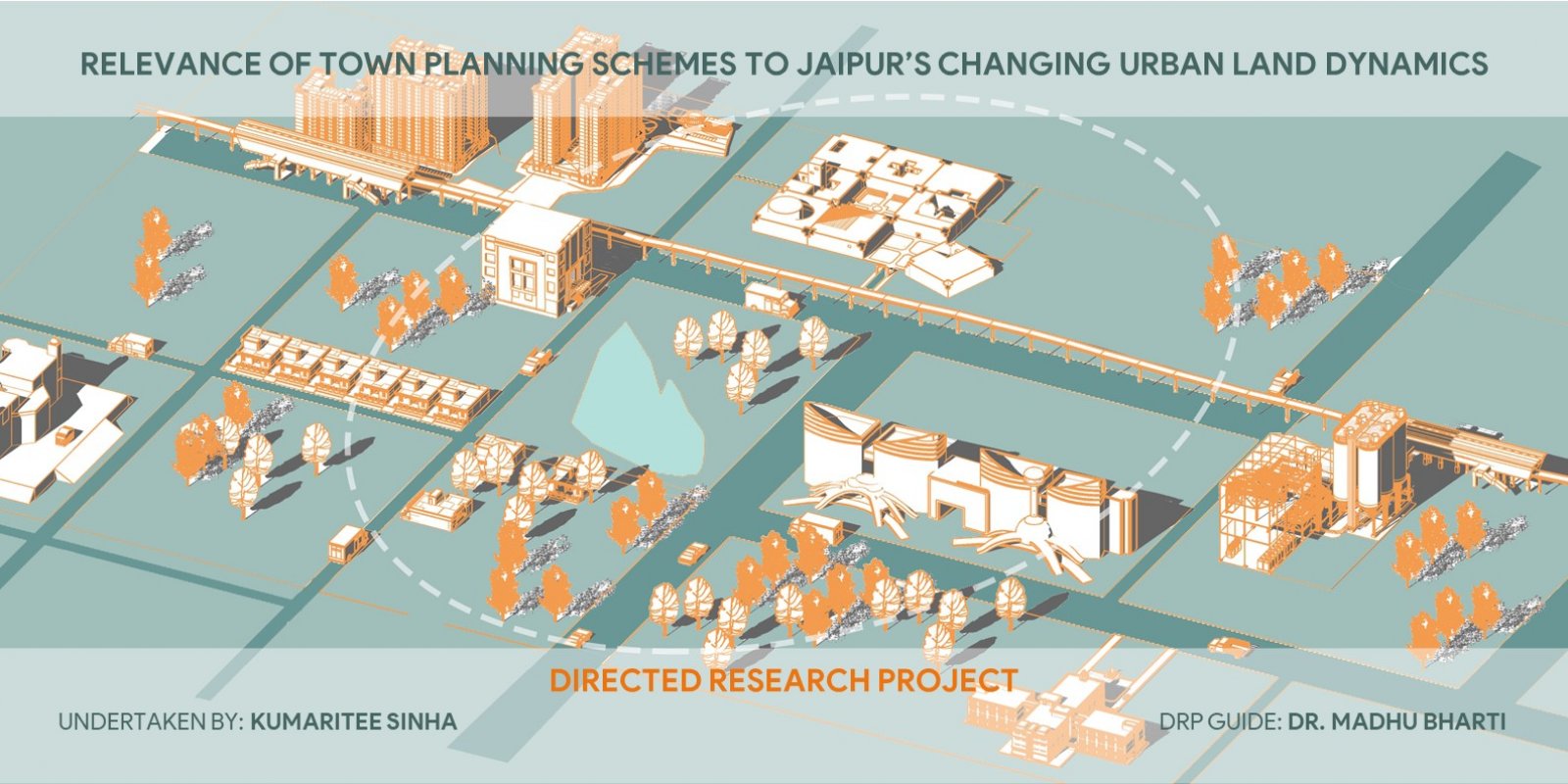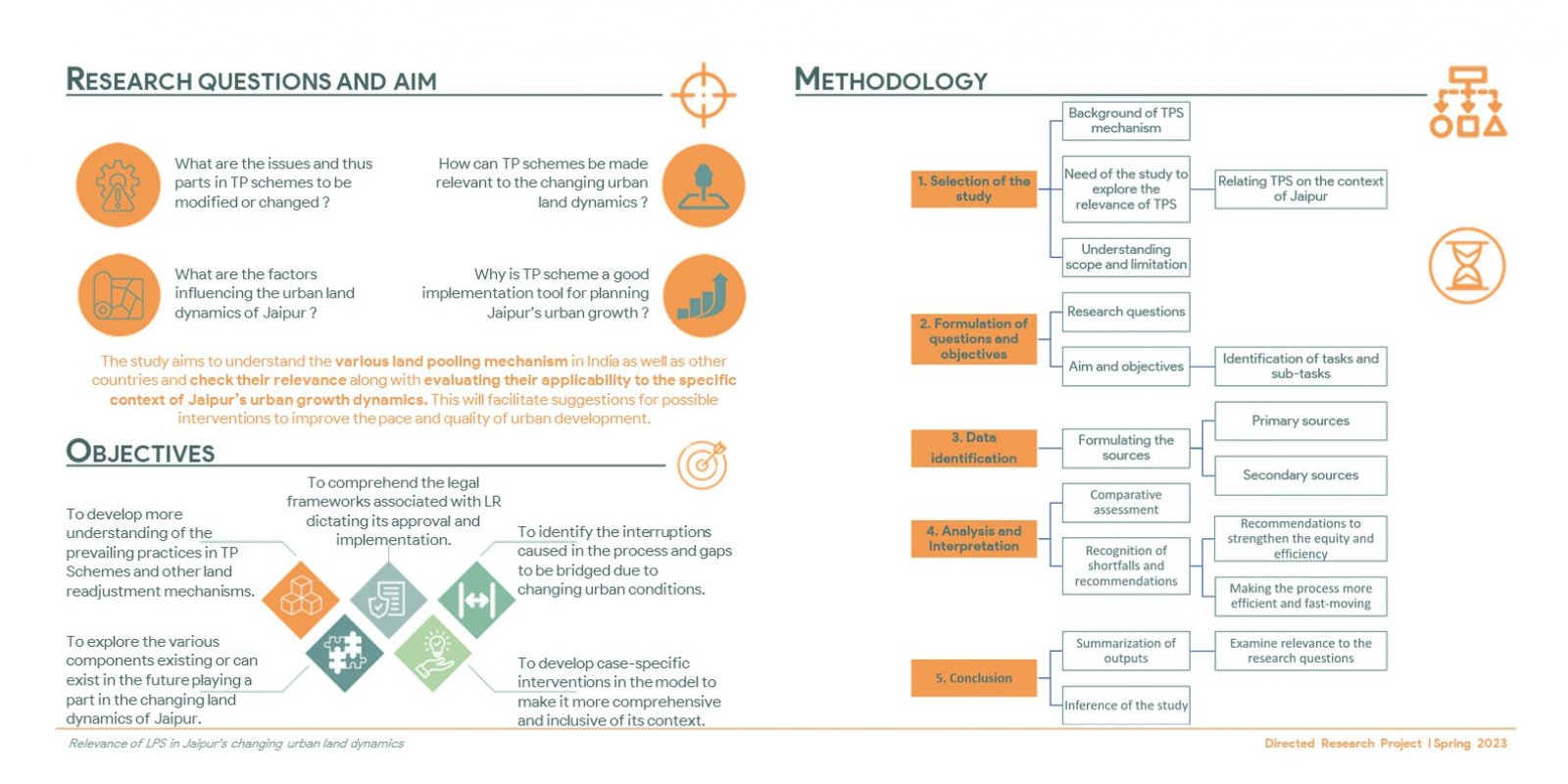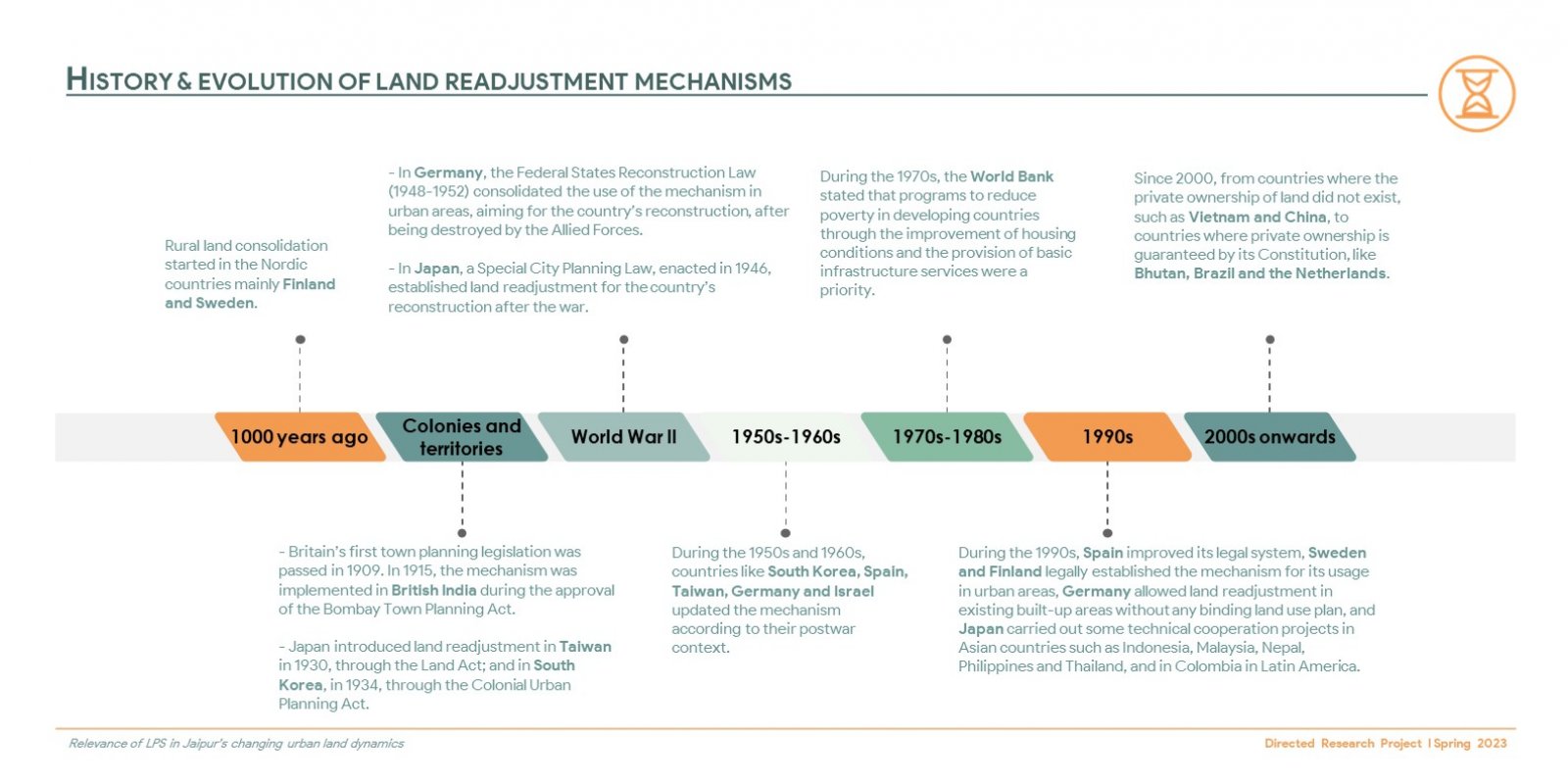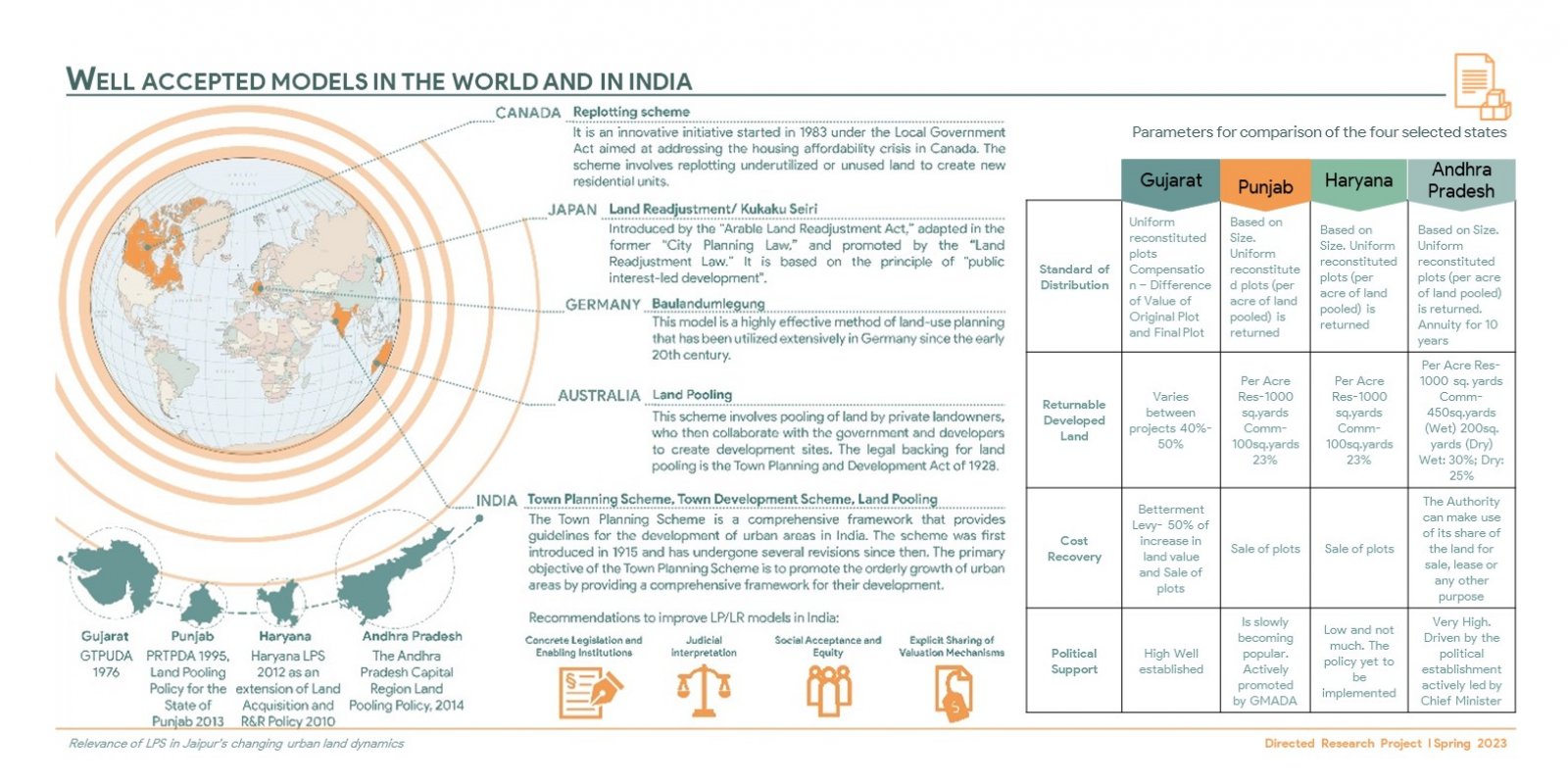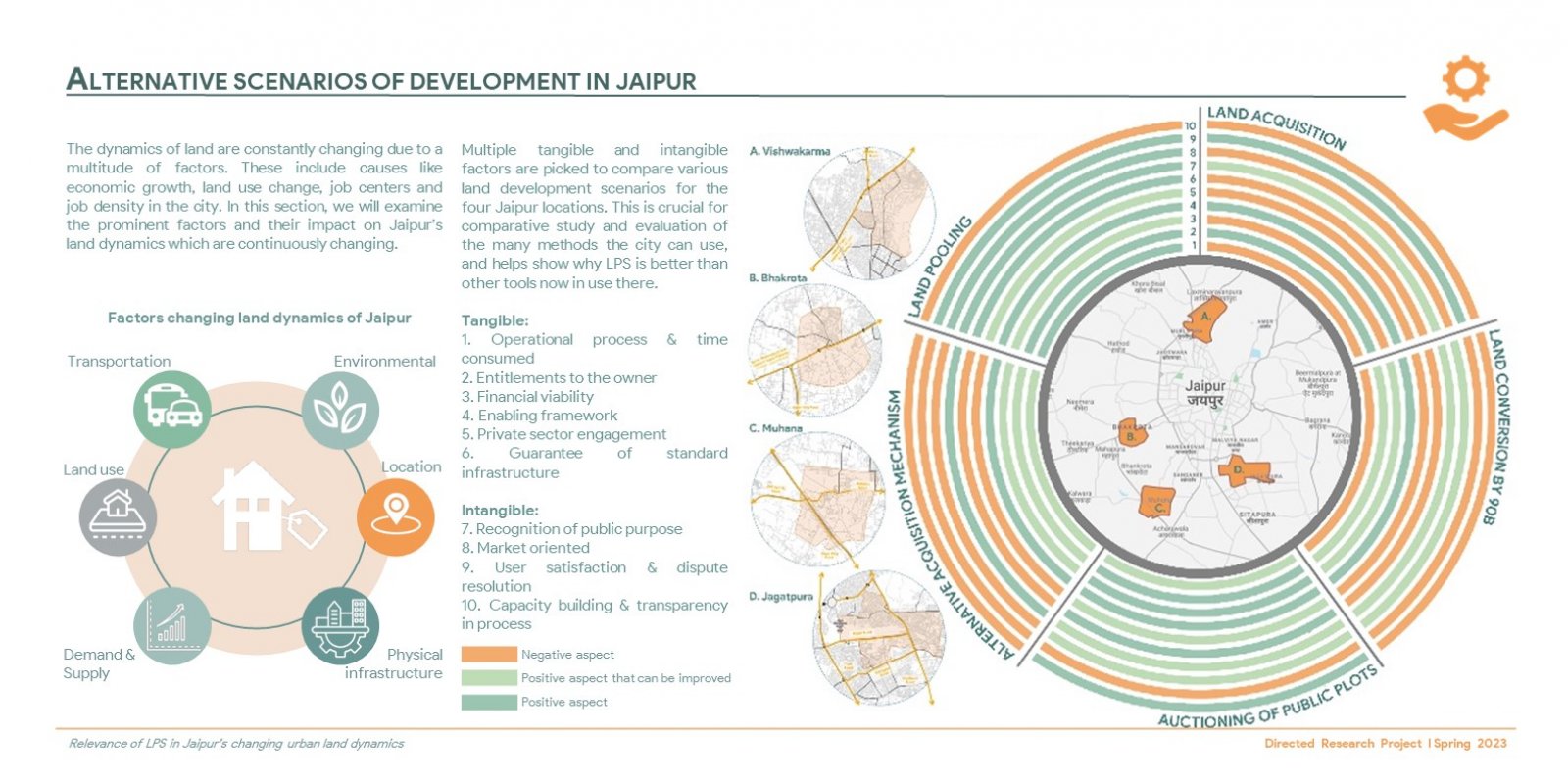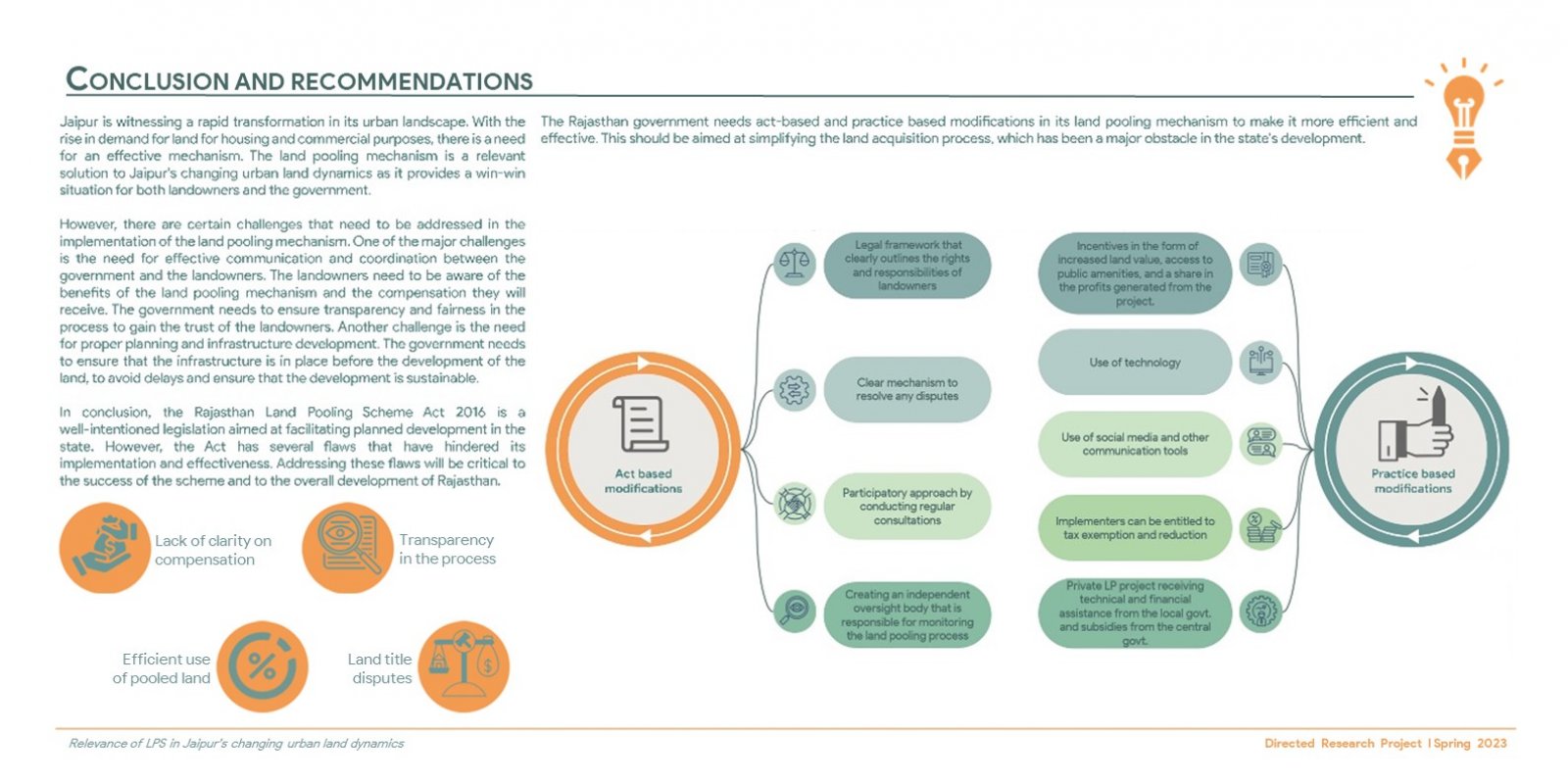Your browser is out-of-date!
For a richer surfing experience on our website, please update your browser. Update my browser now!
For a richer surfing experience on our website, please update your browser. Update my browser now!
In some parts of India, the Town Planning scheme is a successful and popular approach. It has been successfully applied to advance equity and uphold transparency while supplying the populace with urban infrastructure. For the case of Jaipur city, the plan area has consistently been expanded in all directions to include new township plans and financial advancements in the rural outlying regions of the urban limits. As a result, the issue of supplying social and physical infrastructure to the growing periphery with an equal emphasis on planning and execution methods is becoming more and more pressing in the city. Therefore, without compromising Jaipur's historic integrity, land adjustment models can be used as an instrument to study how urban dynamics are changing in the city. The objective of the research is to increase knowledge of current procedures used in town planning schemes and other land readjustment techniques and to be aware of the laws, regulations, and other frameworks related to LR schemes that govern their adoption and application. This will help in determining the process gaps that need to be filled and the interruptions brought on by shifting urban environments. And further investigate the numerous elements that are currently or may be in the future contributing to the shifting land dynamics of Jaipur. Hence finally provide case-specific interventions for the model to make it more thorough and contextually inclusive. The study has followed a simple research methodology, which starts with the selection of the study region. This allowsto identify the areas where the LRS mechanism's present implementation procedure can be improved. The following stage involves developing goals and subtasks with details for each of the stated goals and the expected outcomes and is supported by data collecting from reliable primary sources like surveys, stakeholder interviews, and meetings with relevant authorities, as well as secondary sources including literature reviews, reports, case studies, theories, books, and articles. In conclusion, the method for pooling land is an appropriate response to Jaipur's shifting urban land dynamics. However, for the land pooling method to be implemented successfully, there must be good communication and coordination between the government and the landowners, as well as appropriate interventions in the current framework and operational mechanism leading to a holistic tool for urban development.
